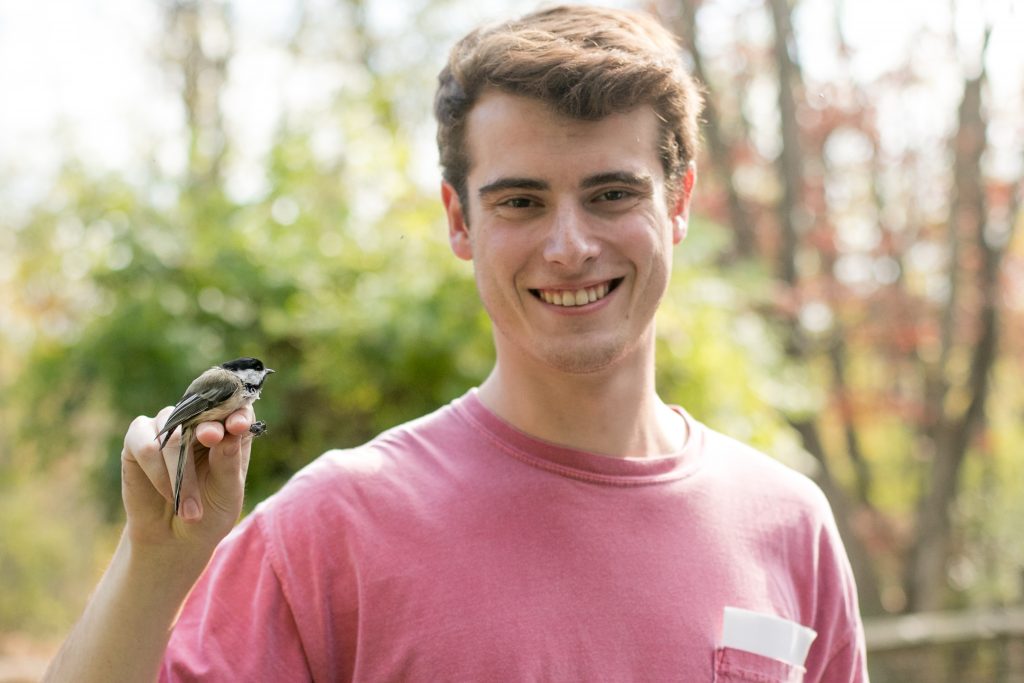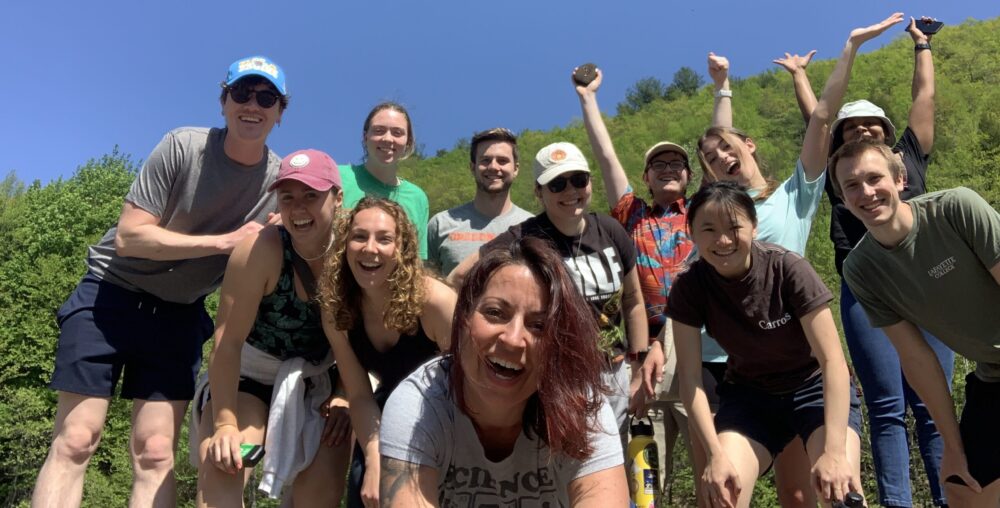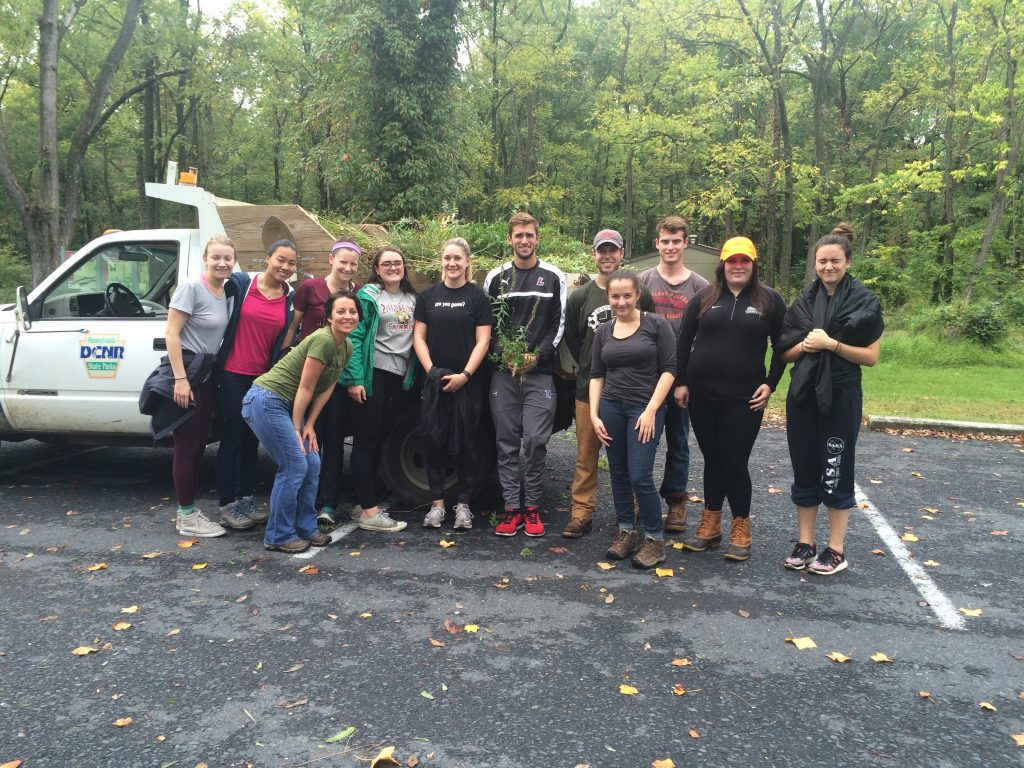CONSERVATION BIOLOGY
Writing Course.
Prerequisites: Biology 111 or my permission.

Students observe the process of bird banding in the laboratory portion of this course. Bird banding is a non-invasive, long-term method of observing and studying birds without interfering with their natural behavior. This practice provides conservationists and ornithologists with vital information that can be used to protect critical bird habitats. Photo credit: Hana Isihara ’17
Counts as a science course for Environmental Studies Majors, a core course for Environmental Science Majors and Minors.
TOPICS AT A GLANCE
Human population growth * Biodiversity (what, where, values) * Threats to Biodiversity (e.g., habitat loss, overexploitation, invasive species, climate change) * Extinction * Conservation genetics * Protecting populations * Protected areas * Restoration ecology * Sustainable development
Description: Conservation Biology includes aspects of molecular biology, ecology, environmental science, and politics and draws on scientific evidence to make decisions about conservation of all forms of life. This course will provide students with an introduction to both the scientific basis of modern conservation biology and the application of these principles to conservation problems around the world. In order to understand the complexities involved in making conservation decisions, we will read from many sources, have class and small group discussions, and engage in debate. Because Conservation Biology and wildlife management are, more than anything, about the application of ideas to the solving of problems, the objective of the laboratory portion of this course is to provide students with practical, problem-solving experiences in conservation biology beyond the classroom.

